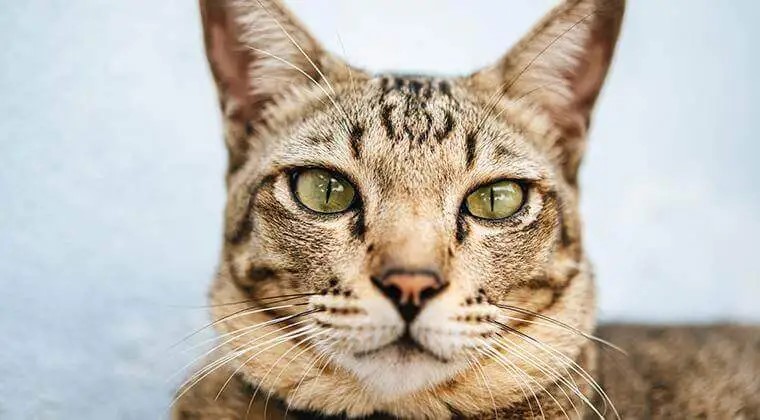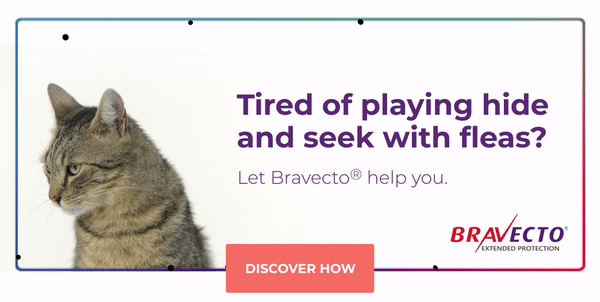Cat Eye Problems
How to Recognise & Resolve Them
Those of us who are fortunate enough to be cat ‘parents’, will know all about their fabulous eyes. Unfortunately, cat eye diseases can affect those gorgeous eyes and take away their enticing shine and glimmer. They may also affect your cat’s sight.
It’s important that you are able to recognize the symptoms of common cat eye problems and to know when a visit to your vet is necessary.

Myths
Many countries and cultures have had their myths about cat eyes. In ancient China, they used their cats as watches: they believed that their eyes indicated the ebb and flow of time passing. The Celts believed that cat eyes were a door to another world. The ancient Egyptians believed that the light reflected in cat eyes was a ray of sunshine, sent by the Sun God, Ra.
The Facts
Feline eyes actually have no mystical powers. The belief that cats can see better than humans in the dark is also a myth. Cats are, of course, night-time hunters and they do have an eye adaptation that enables them to see in very dim light.
However, there are some really fascinating features of cat eyes:
- So what about that mysterious glow you see when your cat’s eyes catch a direct ray of light? It is due to a layer of cells in the back of the retina (at the back of the eye) which act like a mirror. This layer, called the ‘tapetum lucidum’, collects the light and reflects it back out through the eyes, making them appear to glow.
- Your cat is able to ‘zoom-in’ on tiny prey, like mice. His vision is sharpest between two to three feet away and he does not focus on his whole surroundings – his focus is fixed on the unfortunate mouse.
- The ‘rods’ (light detectors) in your cat’s retina, can also act like little motion detectors so she can detect movement better than humans can.
- In addition to the upper and lower eyelids which humans have, cat eyes have a third, opaque, white eyelid, called the ‘nictitating membrane’ which lies between the lower lid and the corner of each eye. It helps to clear dirt from the surface of the eyeball and to keep the eyes moist. You can see it if your cat is half-asleep with her eyes slightly open.
Cat Eye Diseases
Always consult your vet as soon as possible if you notice any symptoms of a possible eye disease in your cat. Prompt diagnosis and treatment may make the difference between your cat losing her eyesight, or not.
We’re now going to discuss the various diseases which cats can develop in their eyes and we’re going to explain how you can recognize them.
Most cat eye infections can be cured with the appropriate treatment, as long as they are treated promptly, but some infections may become chronic or recurring. More serious secondary diseases may develop, such as corneal ulcers.
Conjunctivitis
This is quite a common eye problem in cats, often referred to as ‘pink eye’ (as it is in humans).
Causes
It’s usually caused by an upper respiratory infection, due to viruses or bacteria.
Symptoms
- Red, swollen eyes
- Runny eyes with a discharge that may be clear, grey, yellow, green or dark, rusty red
- Sneezing or nasal discharge which may suggest a respiratory illness
- Squinting or rubbing the eyes
Corneal Ulcers
This can be a serious condition. Open sores may appear on your cat’s corneas. The cornea is a transparent layer on the surface of the eyes, which light can pass through.
Causes
This disease may be caused by injuries or infections, such as: ‘feline herpesvirus’, FHV-1 as well as physical damage to the surface of the eye.
Symptoms
- Rubbing the eyes
- Cloudiness of the eye
- Redness and/or discharge from the eye
- Changes in behaviour which may indicate pain
- Sneezing or nasal discharge which may be caused by respiratory infections
Treatment
Visit your vet promptly to avoid any long-term issues, such as vision loss or disfigurement. Your vet will find out the underlying cause of the ulcer and then prescribe appropriate treatment.
Anterior Uveitis
The front part of the uvea (which includes the coloured part of the eye, or iris) can become inflamed, which is called anterior uveitis or iridocyclitis. It is a serious condition and may cause vision loss. It may be seen in one or both eyes, depending on the cause.
Causes
It may be caused by trauma, parasites (including toxoplasmosis), or systemic, viral infections like feline immunodeficiency virus, feline leukemia or feline peritonitis.
Symptoms
- Squinting of the eyes
- A protruding nictitating membrane (the third eyelid)
- Bloodshot or red eyes
These may be the only signs of this disease that you can see.
Treatment
You should consult your vet promptly. She will determine the underlying cause of this disease by performing some tests and then she will prescribe the appropriate treatment.
Glaucoma
Within the eye there is a fluid called aqueous humor. If the amount of this fluid increases enough, the pressure can destroy the retina at the back of the eye. Without it, your cat will not be able to see. Humans can also have this condition.
Symptoms
- Cats will usually be in a lot of pain, indicated by their behaviour.
- Redness in the whites of their eyes
- Dilated (large) or slow-changing pupils
Treatment
It is very important that you take your cat to your vet immediately if you suspect glaucoma. It is an emergency as cats with glaucoma can lose their sight and even their eyes if they are not treated in time to relieve the pressure in their eyes. Your vet will also prescribe pain killers. You will probably find that your cat will require long-term treatment.
Cataracts
There is a lens in our cat’s (and in our) eyes which regulates the light to the retina. lf a cataract develops, this lens becomes opaque or cloudy which reduces or prevents vision.
Causes
In cats, these cataracts are usually a secondary consequence of anterior uveitis. They are often found in young cats and may be inherited.
Symptoms
- You may not initially notice any symptoms.
- Your cat may begin to show signs of vision loss: moving more slowly, especially in dim light; bumping into objects, furniture etc.
Treatment
Your vet will diagnose this disease and then make treatment recommendations.
Blindness – Caused by High Blood Pressure
Hypertension, or high blood pressure is common in cats. Their eyes are very sensitive to changes in blood pressure and if it is high, the retina at the back of the eye may detach and they may become blind.
Symptoms
- Sudden blindness may be the first and only sign of high blood pressure in cats, especially as they get older.
- Bumping into objects or moving slowly, especially in dim light
Treatment
If you notice any of these symptoms, you will need to take your cat to your vet. He will diagnose your cat and advise you on the appropriate treatment for his high blood pressure. He may prescribe more than one treatment based on the cause of the high blood pressure.

Preventative Care
It is possible to help to prevent cat eye diseases by good daily care.
Vaccinations
It is very important to keep up-to-date with your cat’s vaccinations as they can reduce the effects of the disease and prevent virus-shedding.
- The core vaccinations given to kittens include protection against feline herpes virus.
- Vaccination against Chlamydia Felis reduces the severity of this disease.
- Vaccination against Feline Leukemia Virus reduces the severity of the disease.
Daily Care
- Give your cat good-quality food, containing animal protein, as this will usually contain enough taurine, an amino acid, to prevent retinal degeneration.
- Try to avoid stressful situations for your cat (and for you!), as some cats carry Feline Herpes Virus and/or Feline Leukemia Virus, which can be reactivated by stress.
- Take your cat to your vet for ‘wellness checks’, especially for adult and older cats. Your vet will then be able to screen for possible causes of high blood pressure and can advise you regarding blood pressure management.
Your daily care can help to prevent certain cat eye diseases and you will be helping to protect and preserve his/her overall health and … those fabulous eyes.
ZA-NON-240100003

Subscribe to our Newsletter
Get to know your furry friend better! Sign up for all things dog- or cat-related.
The Hairy Facts about the dreaded hairball
12 April 2021
Help! My dog’s barking mad! Volume 2
12 April 2021
Your Itchy, Scratchy Cat – All About Cat Skin Problems
12 April 2021
The Dog’s Diet: A Bone of contention?
01 April 2021
Mango Fly Worms: How to Spot and Eliminate them
Posted on November 28,2019
Managing Mange And Mites In Your Dog
Posted on June 11,2018
Why Do Cats Purr and How? Learn What Your Cat Is Saying
Posted on October 14,2020
How to Get Rid of Ear Mites in Dogs
Posted on November 06,2019









